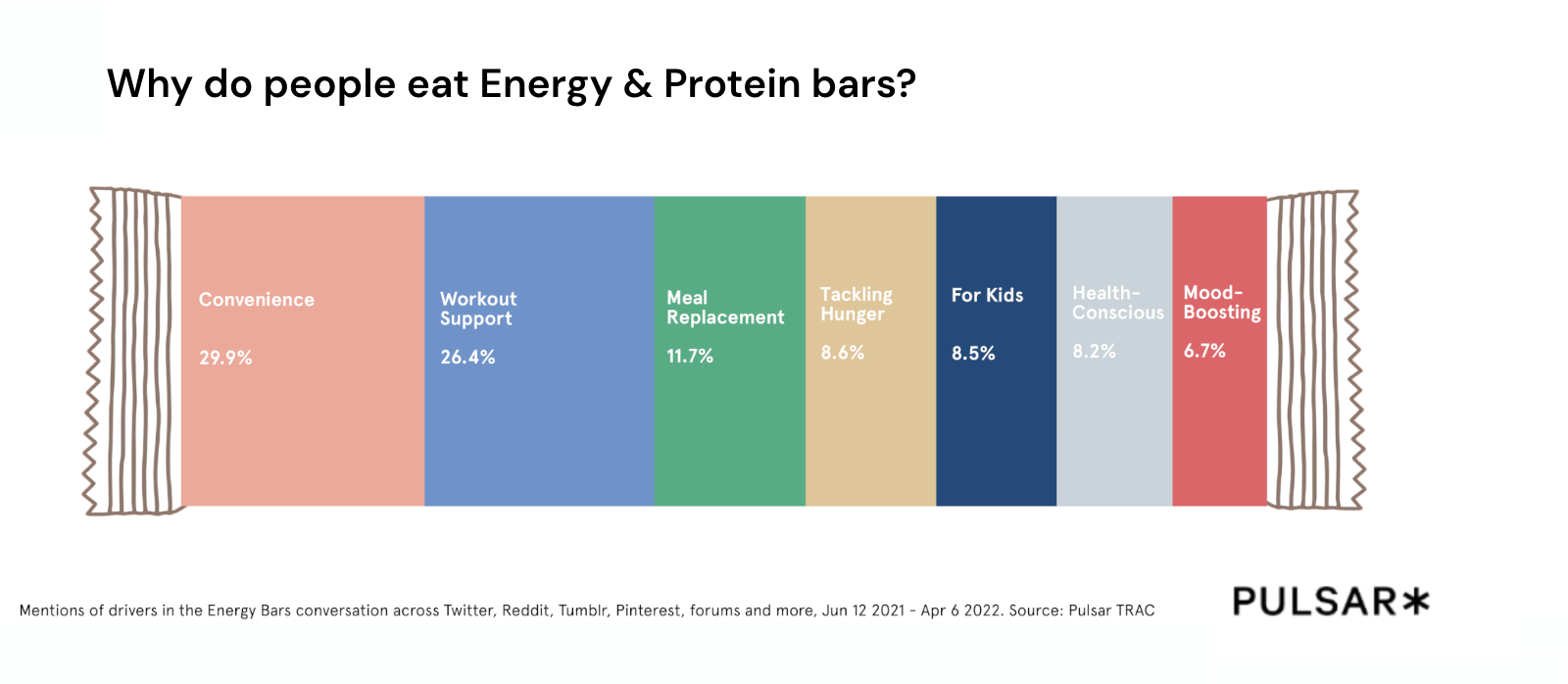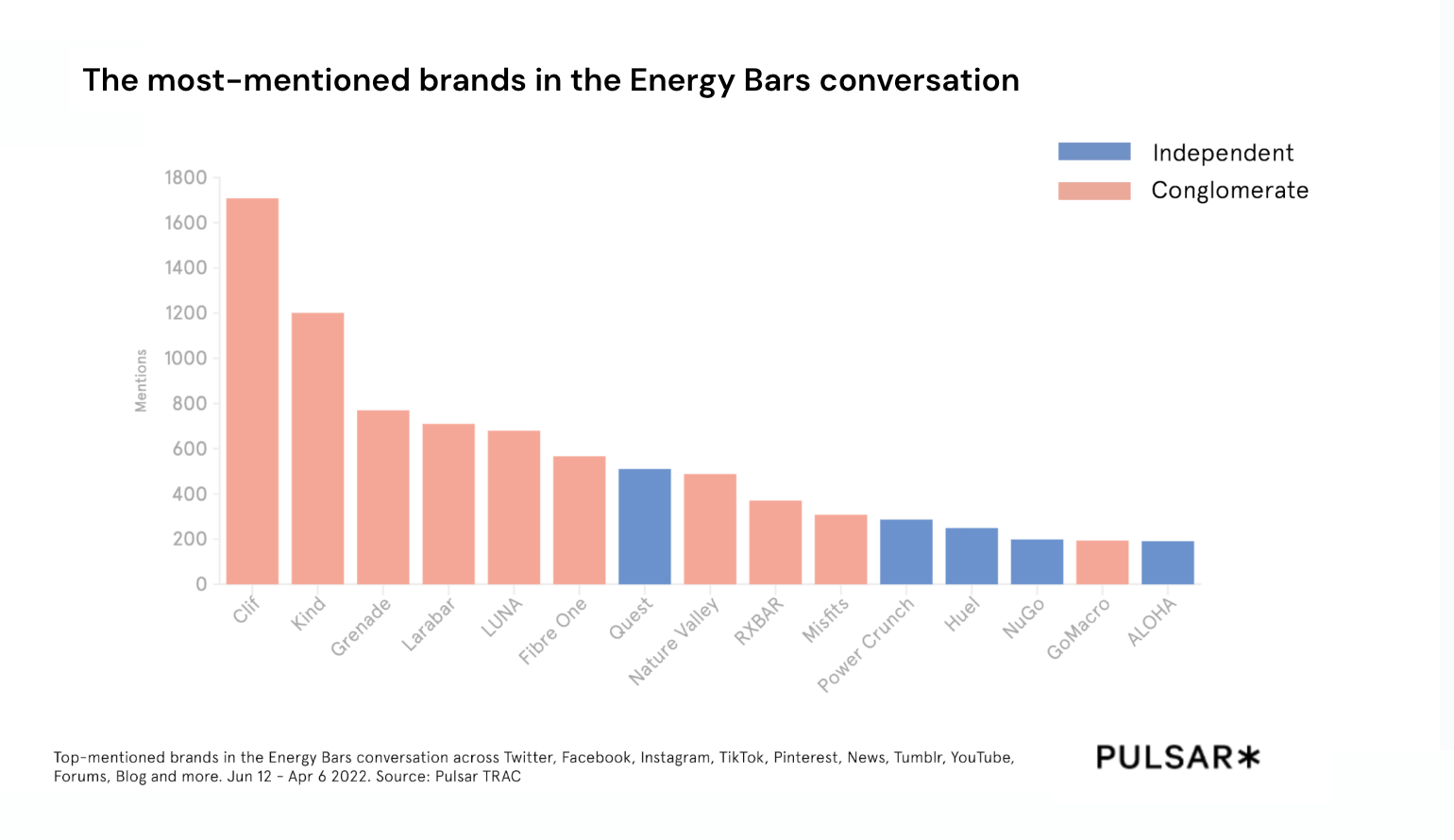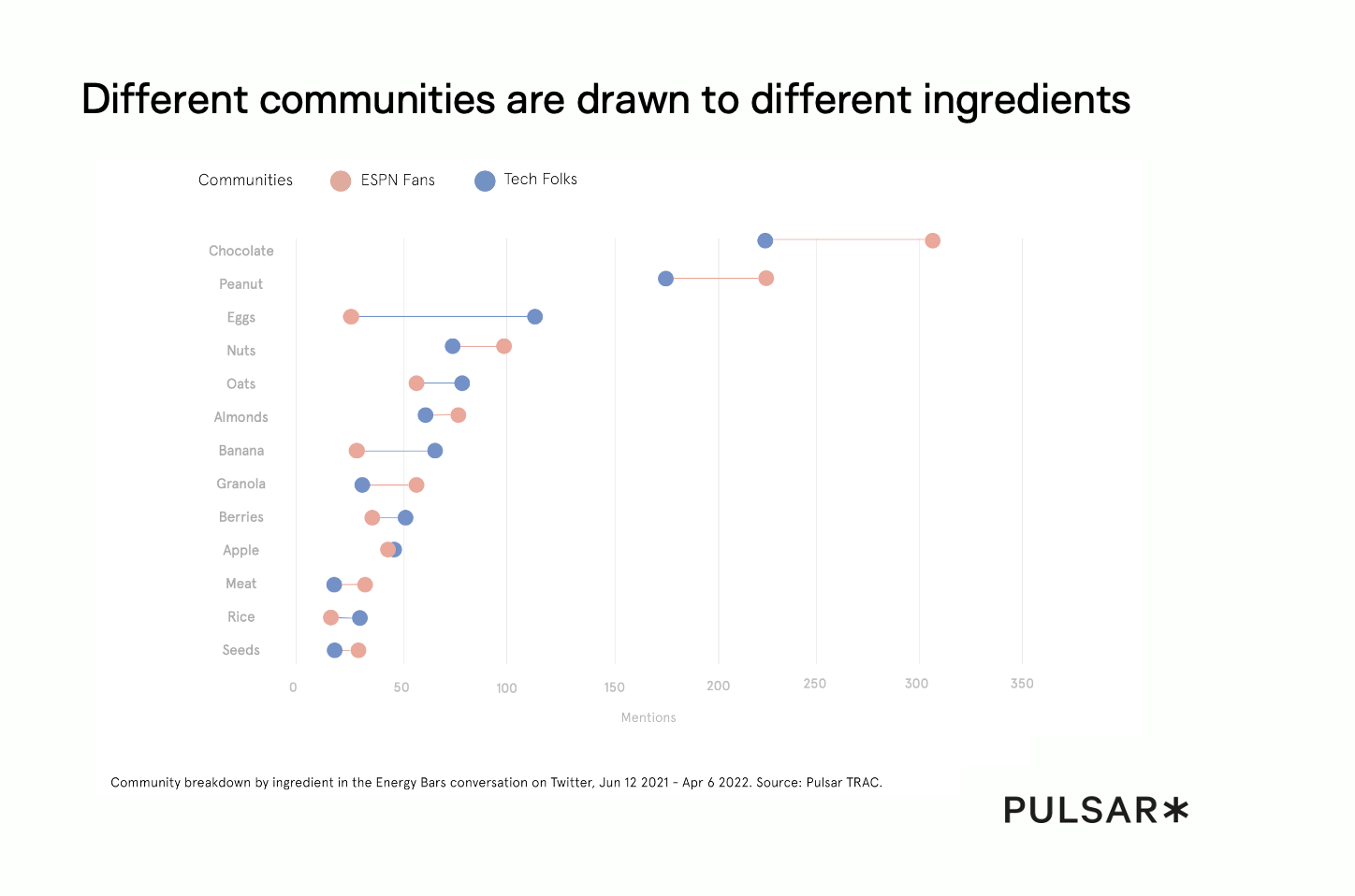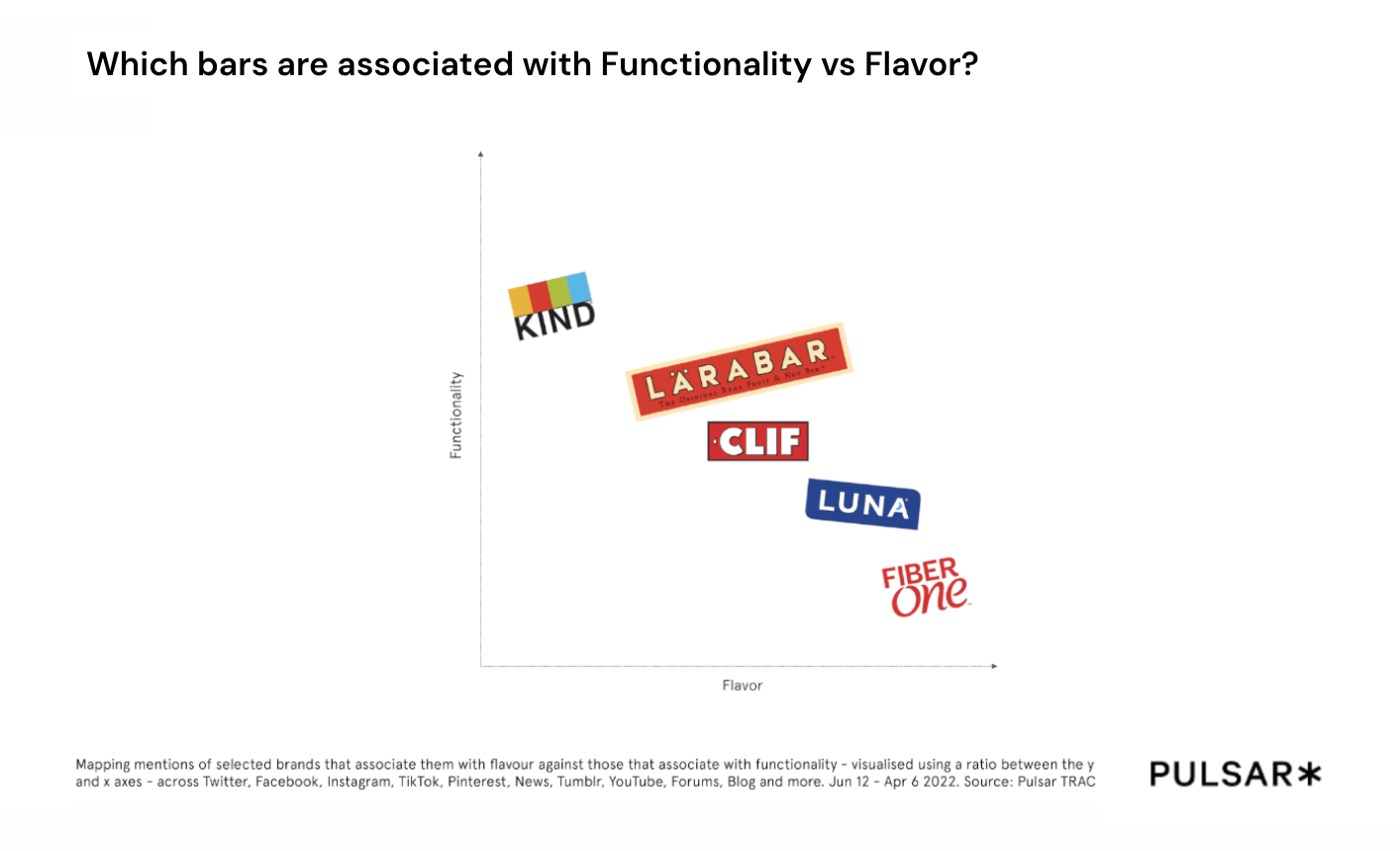
The new consumption habits around Energy & Protein Bars
- Food and Drink
Once earmarked for astronauts and endurance marathoners, energy and protein bars have gone mainstream, moving from space race to footrace, becoming synonymous with athletes and workouts and growing into a multi-billion dollar market. But the ubiquity of the bars has been accompanied by a divergence in how consumers perceive and consume them.
Gamers, children and communities discussing eating disorders are amongst the main groups either engaging with or popularly associated with the category. There is, therefore, no one consumer type, no one category perception, and no single way to eat a bar.
Social mentions have recovered from their lowest point in several years, with WFH habits appearing to have contributed to a dip in conversation through 2020. Counterintuitively, energy bars also saw their highest number of mentions within this period - a sensation attributable to young Thai protestors bringing energy bars with them on anti-government protests.
That this conversation simply dipped, however, rather entirely falling away, is an early indication that the bars are no longer seen purely as on-the-go snacks or workout aids. Widespread closure of gyms and public spaces - and an enforced proximity to personal fridges and kitchens - did not wipe out the public’s appetite.
Clearly, these factors remain elevated in the minds of consumers, but the single largest factor within the conversation at large is ‘Convenience’, which just as easily applies to sedentary, at-home behavior as it does exercise routines.
Protein bars aren't your only option for a high-protein snack on the road.
Link:https://t.co/c9h0wWgW40 pic.twitter.com/F7Ffg8H86L— Lifehacker (@lifehacker) April 7, 2024
Using Pulsar TRAC, we can analyze the conversation across Twitter, Facebook, Instagram, TikTok, Reddit and more, from Jun 2021 to April 2022, to unearth insights within the global conversation taking place around energy & protein bars.

Convenience also intersects with Meal Replacement (as well as both Tackling Hunger and Health Consciousness) to reveal instances in which people replace a conventional meal with an energy or protein bar.
This is especially pronounced in the case of breakfast.
Several themes emerge when cross-referencing these audiences with one another.
First, the recurrence of gaming-orientated groups within the brand specific conversations. This group talks about consuming the product in ways some distance removed from workouts and exercise, either as a meal replacement:
Eating a protein bar while working on a V8 or drinking a V8?
— Jason v2024.11 - Followed by ravens. (@ViRaLuNdEaD) October 5, 2021
Or else as lower-calorie type of snack:
wait... if 1 protein bar is 300 calories, and half of 24 is 12, 12 x 300 = 3600... alex slow down
— the (@EBinded) October 8, 2021
The various types of exercise and nutrition buffs, on the other hand, are more likely to solicit and share tips around what types of bars bring which benefits.
Energy bars not the right approach- too much sugar, minimal fats and proteins. Try meal replacement bars/shakes for gym users- better composition. Usual brands: Huel, Maximuscle, myprotein, etc
— Tom Staniford (@tomstaniford) March 14, 2022
Their cousins, the sports fans who take more pleasure in watching rather than playing sports, are disproportionately likely to be responsive to various deals and sponsorships.
Very, very cool: all 36 @BYUfootball walk-ons have entered into agreements w/Built Brands, manufacturer of a healthy protein bar, & will receive a payment equivalent to cost of tuitionhttps://t.co/iXOh591ivE
— Brett McMurphy (@Brett_McMurphy) August 12, 2021
Another tightly defined community is populated by those discussing eating disorders. This group either shares anecdotes and preferred brands, or else stories and tips on recovery.
The intersection of this group with the topic is a complex and delicate one, with bars variously seen as taking the place of meals, or else as a means of paving the road to recovery.
Drag Fans, on the other hand, engage with the topic in a number of different ways, talking about the bars as meal replacements, but also a heavily memed plot point within The Walking Dead.
These different communities, removed from the popular conception of what an energy or protein bar consumer looks like, bring their own behaviors and consumption patterns. And this extends not only who and why, but also to the locations associated with them.
All of these contextual factors and behavioral drivers then play a role when individuals choose a particular product or brand. And there’s one that stands head and shoulders above the others in terms of online mentions.

We’ve made a division here between brands with a single entry, and those who sit as part of larger ownership structures. For instance, as well as occupying top spot, Clif Bar & Company also own the LUNA bar.
As far as ingredients are concerned, the conversation is heavily influenced by the homemade conversation. Not that this conversation plays out in the same way across the different platforms. The disparity between Twitter, where users report buying commercially available bars (and brands tend to have significant presences), and Pinterest, where users share and ‘pin’ homemade recipes for future use, is especially stark.
Energy and protein bars are products where the separation between store bought and homemade is sometimes less distinct, given the emphasis many brands place on organic, uncomplicated ingredient lists, and the relative uniformity in appearance of bars homemade and store bought.
As a result, we see the same ingredients mentioned within each conversation, and the continuing hegemony of chocolate and peanut butter.
As well as unsurprising ingredients, also see a few more unlikely ons:
If you apply these tips, eating more protein every day will be easy.
By doing this you’ll be less hungry,
consume fewer calories and lose more weight.
Focusing on protein will make reaching all of your goals easier.
— Daniel “Cala” Calabrese | Father Figure Builder (@stronglikedad) December 14, 2021
Naturally, however, different communities will place emphasis on different ingredients. And we can visualize these disparities by mapping ingredient mentions against the online communities defined previously.

Chocolate and eggs are two ingredients with pronounced variance between communities. And that makes sense, given the popularity of vegan or low/no sugar diets, and the differing extents to which these diets are adopted across distinct communities.
Clean and plant-based eating are clearly part of a wider societal trend, but also typify a balancing act between flavor and functionality within the energy & protein bar market.
While all food types have longer-term implications on health and lifestyle, this category is notable for its easily discernible short-term impacts. Did the bar provide the energy required to perform a particular task? Just how convenient was it? In this context, these translate to functionality.
Using the visualization below, we map how often particular brands are spoken about in reference to this sense of functionality, and how often in reference to taste or flavor.

Energy & protein bars are fundamentally linked to evolutions in individual and societal behavior. As those behaviors change, so too will the way people think about and consume these bars. They may not have fuelled the kind of space colonization that animated imaginations in the 60s, but the humble bar seems set to be an indelible part of the future.
This article was created using data from TRAC


